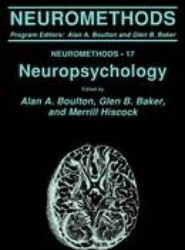(To see other currencies, click on price)
MORE ABOUT THIS BOOK
Main description:
Movement is the way that animals interact with their environment and is under the organization and complex control of the brain and spinal cord. Multiple central nervous systems, including cortex, basal ganglia, cerebellum, and brainstem, interact to provide precise motor control and integration. Damage or disease within these systems cause profound motor disturbances in man, which can be effectively modeled in animals to develop a better understanding and treatment of the human condition. Animal Models of Movement Disorders introduces a variety of methods and techniques used to model and assess motor function in experimental animals from lower orders, such as drosophila and c. elegans, through vertebrate species including fish, to mammals, such as rodents and non-human primates. The most advanced contemporary models in each system are presented at multiple levels of analysis from molecular and genetic modeling, lesions, anatomy, neurochemistry, to imaging and behavior. Volume II of this detailed collection contains sections on the basal ganglia, neo- and allo-cortical systems, cerebellar and brain stem systems, as well as spinal cord systems.
Comprehensive and meticulous, Animal Models of Movement Disorders serves as a valuable reference for those studying motor disorders by covering methodologies in detail and providing the information necessary to consider both the appropriate models and assessment tools that can most informatively answer the key experimental issues in the field.
Contents:
Part I: Basal Ganglia
1. Behavioral Assessment of Genetic Mouse Models of Huntington's Disease
Miriam A. Hickey and Marie-Francoise Chesselet
2. Excitotoxic Lesions of the Rodent Striatum
Mate D Doebroessy, Fabian Buchele, and Guido Nikkhah
3. Combination Lesion Models of MSA
Daniela Kuzdas and Gregor K. Wenning
4. The Role of the Dorsal Striatum in Instrumental Conditioning
Mark Rossi and Henry H. Yin
5. 3-Nitropropionic Acid and Other Metabolic Toxin Lesions of the Striatum
Cesar V. Borlongan and Paul R. Sanberg
6. Functional Assessment of Subcortical Ischemia
Tracy D. Farr and Rebecca C. Trueman
Part II: Neo- and Allo-Cortical Systems
7. Functional Organization of Rat and Mouse Motor Cortex
G. Campbell Teskey and Bryan Kolb
8. Forebrain Circuits Controlling Whisker Movements
Kevin D. Alloway and Jared B. Smith
9. An Approach to Understanding the Neural Circuitry of Saccade Control in the Cerebral Cortex Using Antidromic Identification in the Awake Behaving Macaque Monkey Model
Kevin Johnston and Stefan Everling
10. Photothrombotic Infarction of Caudate Nucleus and Parietal Cortex
Toshihiko Kuroiwa and Richard F. Keep
11. Models of Rodent Cortical Traumatic Brain Injury
Frances Corrigan, Jenna M. Ziebell and Robert Vink
12. The Use of Commissurotomy in Studies of Interhemispheric Communication
Ian Steele-Russell
Part III: Cerebellar and Brain Stem Systems
13. Genetic Models of Cerebellar Dysfunction
Robert Lalonde and Catherine Strazielle
14. Cerebellar Control of Fine Motor Function
Rachel M. Sherrard
15. Cerebellum and Classical Conditioning
Richard F. Thompson
16. Assessments of Visual Function
Ma'ayan Semo, Carlos Gias, Anthony Vugler and Peter John Coffey
17. The Role of the Pedunculopontine Tegmental Nucleus in Motor Disorders
Nadine K. Gut and Philip Winn
Part IV: Spinal Cord Systems
18. Contusion Models of Spinal Cord Injury in Rats
Kelly A. Dunham and Candace L. Floyd
19. Demyelination Models in the Spinal Cord
Paul A. Felts, Damineh Morsali, Mona Sadeghian, Marija Sajic, and Kenneth J. Smith
20. Preparation of Spinal Cord Injured Tissue for Light and Electron Microscopy Including Preparation for Immunostaining
Margaret L. Bates, Raisa Puzis, and Mary Bartlett Bunge
21. Assessing Spinal Cord Injury
Gillian D. Muir and Erin J. Prosser-Loose
22. Precise Finger Movements in Monkeys
Roger Lemon
PRODUCT DETAILS
Publisher: Springer (Humana Press Inc.)
Publication date: September, 2011
Pages: 458
Weight: 1056g
Availability: Available
Subcategories: Neurology, Neuroscience
From the same series
Francisco Ciruela
Alon Korngreen
Judee K. Burgoon
David Walker
Nina Karpova
Gabriela K. Popescu
Jerome Y. Yager
Heather A. Bimonte-Nelson
Tetsuichiro Saito
Adalberto Merighi
Giselbert Hauptmann
Joost Verhaagen
Pierre L. Roubertoux
Kewal K. Jain
Wolfgang Blenau
Mario Tiberi
Vangelis Sakkalis
Benjamin R. Arenkiel
Jennie B. Leach
Johannes Hirrlinger
Alvaro Pascual-Leone
Theodore H. Schwartz
Eugenio F. Fornasiero
Antoine Triller
Fritjof Helmchen
Alan A. Boulton
Alan A. Boulton
Peter Thorn
Riccardo Brambilla
Alan A. Boulton
Alan A. Boulton
Alan A. Boulton
Alan A. Boulton
Wolfgang Walz
Alan A. Boulton
Alan A. Boulton
Alan A. Boulton
Alan A. Boulton
Alan A. Boulton
Alan A. Boulton
Alan A. Boulton
Alan A. Boulton
Alan A. Boulton
Alan A. Boulton
Alan A. Boulton
Alan A. Boulton
Wolfgang Walz
Alan A. Boulton
Alan A. Boulton
Alan A. Boulton
Alan A. Boulton
Alan A. Boulton
Peter V. Nguyen
Stephane Marinesco
H. Aldskogius
Rolf Dermietzel
Paul M. Pilowsky
Giuseppe Di Giovanni
Ricardo Martinez Murillo
Nicole M. Avena
Klaus Ballanyi
Jean-Rene Martin
Bassem A. Hassan
Gerhard Grunder
Emilio Badoer
Allan V. Kalueff
Hideyuki Mukai
Todd D. Gould
Ole H. Petersen
Tommaso Fellin
Alexei Morozov
Yannis Karamanos
Alan A. Boulton
Stephen B. Dunnett
Todd D. Gould
Patricio O'Donnell
Ka Wan Li
Scott Q. Harper
Michael Aschner
James J. Chambers
Mary C. Olmstead
Illana Gozes
Peter Paul de Deyn
Robert P. Vertes
Andrea C. LeBlanc
Shlomo Seidman
Hugh C. Hemmings
Alan A. Boulton
Alan A. Boulton
Wolfgang Walz
Alan A. Boulton
Allan V. Kalueff
Allan V. Kalueff
Chao Ma
Jacob Raber
Ulrich Dirnagl
Iok-Hou Pang
Allan V. Kalueff
Kewal K. Jain
Prof. Alexei Verkhratsky
Todd D. Gould
Massimo Filippi
Scott C. Baraban
Illana Gozes
Wolfgang Walz

















































































































